The Art of Sound...
- amiedodgsonart
- Mar 13, 2020
- 30 min read
Updated: Apr 16, 2021
There are many artists that correlate abstract painting to the rhythms and harmonies of music to influence their artwork. Some of these being people that have the phenomenon Chromesthesia, a type of Synesthesia in which sound involuntarily evokes an experience of colour. Melissa McKracken being one of these; she paints vivid abstracts in oil and acrylics of the sounds she hears around her daily. Inspired by certain songs, the works of art burst with texture and splashes of polychromatic delight. Jack Coulter is another one; he is an abstract expressionist painter and also has the rare sensory, neurological phenomenon, which has a profound effect on his work. His work has been described as "vivid, visceral and often inexplicably unsettling." In this interview with him, he goes into great detail about what life was like for him growing up, his inspirations and what it is like living with the condition. I found it fascinating. I also find his way of working truly amazing. He chooses to paint with objects he finds and with paint he has found that has been discarded, stating that 'I have never in my life used a paint brush'. Watching him in his videos on Instagram is mesmerising; the way he throws the paint around along to music, splashing and mixing colour as he goes. I began looking into him and Melissa during the 'inside Outside' project. It was right at the end of the project and I didn't feel I had enough time to go into the research fully and do it justice. Therefore I have chosen to explore this further in my Final Major Project for the last project of my Foundation year. I find them both inspirational. The connection they both have with music, colour and art is something I am choosing to explore deeper within my own practice. The question that stood out for the most was this;what If you could actually paint with music? What if the speaker was the paintbrush? I have seen and heard of cymatics before so I did a bit of digging to see what I could find.
One of the first videos that came up was this, which I found fascinating. They have used Cymatics to showcase the sound pressure and lighting capabilities of a new speaker, the MHC-V7D. They have clearly used the song over the video, however the paint they used has really inspired me as the aesthetique it gives is really effective for the use of video. I will bare this in mind if I decide to use video and stills to explore Cymatics.
Another Amazing video I found by Nigel Stanford was to me, a masterpiece! The different uses of Cymatics was incredible. All of the science experiments used in the video were real. It features the Chladni Plate, Ruben’s tube, Tesla coil and ferro fluid. Some of these experiments I plan to use myself; The Chladni Plate and ferro fluid.
The Origins of Cymatics
Robert Hooke discovered the Cymatics effect in 1680. He had observed the nodal patterns associated with the vibrations of glass plates. He ran a violin bow along the edge of a plate covered with flour and saw the nodal patterns emerge. Cymatics refers to the study of making sound visible, usually through placing particles on vibrating plates or membranes. It was then developed by Ernst Chladni (a German physicist and musician) later into a techniqueto show the various modes of vibration on a rigid surface, ‘Chladni figures’, this wasdue to the various shapes or patterns created by various modes. When resonating, a plate or membrane is divided into regions that vibrate in opposite directions, bounded by lines where no vibration occurs (nodal lines). Variations of this technique are still commonly used in the design and construction of acoustic instruments such as violins, guitars, and cellos. Since the 20th century, it has become more common to place a loud speaker driven by an electronic signal generator over or under the plate to achieve a more accurate adjustable frequency. This is the type of apparatus and technique I will explore during my project. (Wikipedia, 2020)
Video of Chlandi patterns through frequency range:
A sine sweep showing Chladni patterns. Note that some of these patterns will be very difficult to obtain when doing the experiment.
Mood Board of images developed from the Chladni
Cymatics by Dr Hans Jenny
The physician and natural scientist, Dr Hans Jenny, devised the term cymatics to describe acoustic effects of sound wave phenomena published the first volume of Cymatics: The Study of Wave Phenomena in 1967. The second volume came out in 1972. This book was a written and photographic documentation of the effects of sound vibrations on fluids, powders and liquid paste.I will glean inspiration from this technique and use various mediums to explore cymatics as an artist’s tool. (wikipedia, 2019) When it came to Cymatics Jenny suggested, “This is not an unregulated chaos; it is a dynamic but ordered pattern.” Jenny used crystal oscillators and a tonoscope to vibrate plates and membranes. He used sand on a black drum membrane, which was then caused to vibrate by singing loudly through a cardboard pipe, the sand then produced the famous “chladni patterns”. He suggested that ‘low tones resulted in rather simple and clear pictures, while higher tones formed more complex structures” (Wikipedia, 2019) I will bare this in mind with my experiments.
Jenny’s book ‘cymatics’ goes into great detail around each substance and vibration, I wish to do my own experiments just like this and study each substance and how it reacts and what shapes it makes.
Part 4 of 4: Hans Jenny's "Experiments in animation with sound & vibration".
Alexander Lauterwasser
Alexander Lauterwasser is a German researcher and photographer who based his work around Ernst Chladni and Hans Jenny in the field of Cymatics. (wikipedia, 2018)
On his website he explains his reasons for his interest into the work of them both.
“I am most especially interested in a phenomenology and typography of the shapes formed by vibration and sound and in the issues of morphogenesis, the shaping processes which occur in nature. Having spent many years studying the "Chladni sound figures", i.e. the interaction between individual tones and a very wide range of vibrating metal plates which appears in the sand line images as a type of "sound hieroglyhics", I then moved on to considering the effects of more complex sounds and moving music in water, a medium which is exceedingly receptive and which responds in a very sensitive manner.” This has informed my own creative practice by inspiring me to look into different music and songs that I like and seeing how they react with different mediums in water. He goes on to say, “During this part of my work, a vessel to enable the continually penetrating and superimposed waves to create numerous impressive structures and water-sound images in the water and on its surface transferred all the sound vibrations into the water. These structures and images are then displayed using special reflections of light and can be photographed or filmed.” (Lauterwasser, ca 2020)
I am yet to decide whether or not I plan to use light in my experiments however it could bring a whole new element to the work, especially using photography and video to document.
Figure 1: Square by Lauterwasser, Figure 2: Rectangular by Lauterwasser, Figure 3: Round by Lauterwasser.
I will be expanding my photography practice by taking stills from my experiments with substances and the vibrating plates. I will also take videos and attempt to edit this into a short film using Premiere. I may bring a lighting element into it however I plan to keep it quite simple to begin with and develop further down the line in the project.
TED-X talk on Cymatic Art
TedX Talk and performance by LLND http://art-llnd.com, Instagram : LLND_art
Extracts of new cymatic performance and explanation of their inspirations from Pythagoras, Kepler, Hans Jenny and the study of the Planet's orbiting to understand musical scales, sound and beyond.
This group focus on the relationship between sound and image. They have made a series of Cymatics experiments, explored mediums within art and made installations. In this video they induce sound waves inside the water to create imagery and sound. They explain that they like to make a link between man and earth, therefore looking at which frequencies they can use to generate certain sounds. The say that humans are made up of 80% water and that we have water on the earth therefore there is a connection. They also speak of Pythagoras and how he found a numerical explanation of the universe and revealed the numerical ratio which determines the intervals of the musical scale. Pythagoras’s research was inspired by his studies of the planets orbiting, this has inspired the group, LLND to use the orbital frequencies of the planets scaled to the hearing domain by vibrating stones in water and sensing with specialist equipment what these will sound and look like and then project them on to a screen. The live demonstration they give is very weird and wonderful. Images of the sound waves from different planets orbits; It almost sounds like another alien world and ET’s trying to make contact. They also sound quite beautiful. The host also speaks over the top whilst the images are being projected repeating certain words and phrases. This also gives another worldly feel to the demonstration.
Gabriel Kelemen
Gabriel Kelemen has studied Cymatics and the liquid formations for over 30 years. When Kelemen was a young boy he used a microscope to view patterns and forms moving using power and water, from this he began drawing what he saw. The Nasui Gallery, ca.2020 describes his experiments as being “performed with the rigor and discipline of a physicist, while his artistic sensitivity brings a playfulness and an inventiveness that often yield surprising results” He has produced 3D sculptures that“mimic complex natural structures, such as flowers, biological organisms, and even the human face. His work has garnered much respect in scientific and artistic circles within his native Romania, and his drawings, photos, videos and sculptures are becoming widely exhibited throughout Europe.” (Nasui Gallery, ca.2020)
Kelemen also experiments with drawing and illustrating anything he finds from the stationary waves that arise in liquids as they are stimulated by audible sound frequencies.He states, “Almost everything in the universe is in a vibration state. Clarifying the hierarchy, the origin and co-substantiality of form with the natural language algorithm, grafted on phenomenal synergies, inextricably situates form as a result of stationary wave interference in conjunction with symbolic language-induced inferences.”He has also produced many images of cymatics and standing waves. His work shows how nature responds to invisible forces, which I find fascinating and something that I would like to bring into my own practice and what I am hoping to achieve throughout this project.
Jeff Volk explains, “He works with a sense of beauty and adoration with nature and that comes through his work”.
Kelemen uses a special device called a spherical resonant cavity and one oscillator with a single wave and obtains a structure pentagonal, he states “after a few days in my lab, I was surprised that I saw the human face”Like Kelemen I wish to explore this avenue further, by looking into and understanding our biosphere, the cosmic and the microcosmic universe. (Gabriel Kelemen, ca.2020)
An example of Kelemen's Sculpture:

Kelemen clearly shows his study of nature through his sculptures. Nasui (2015) explains “Kelemen’s sculptures are actually the result of “freezing” the liquids’ movements and energetic vectors in certain volumetrical stages, during long generative progresses. The evolution of these essential mathematical entities reveals marvellous and unexpected processes of the organic life and organic nature.”The form and curves of this piece correlate to pieces of fruit or parts of the body that have been exaggerated and manipulated. The scale of them gives an impression of enlarged molecules. The surface is shiny and the colour is bold and brash. He seems to have emphasised one section of the liquid formation that is aesthetically pleasing to him and exaggerated it in form, shape and size. This sculpture in particular is garish and exciting and contains a geometric shape to it which lends itself to mathematical view point as well as an artistic. The secondary element to this piece is the holes that when viewed under particular spotlights, highlight the shadows which mimic black holes that draw you into and out of the other side of the piece. To me they almost look bulbous and not something I would have in my house.

Kelemen also experiments with drawing and illustrating anything he finds from the stationary waves that arise in liquids as they are stimulated by audible sound frequencies. Nasui (2015) suggests that “they act like an illustrated decoding for the ‘Universal Sphere Vortex Principium’.”
He states, “Almost everything in the universe is in a vibration state. Clarifying the hierarchy, the origin and co-substantiality of form with the natural language algorithm, grafted on phenomenal synergies, inextricably situates form as a result of stationary wave interference in conjunction with symbolic language-induced inferences.”
I find his illustrations far more captivating than his sculptures. I like how he combines imagination and findings within the stationary wave freehand drawings. The correlation between phytotomy (the study of the internal structure of plants) and nature is exciting. Figure 2 shows 5 elements. Clearly a page taken from a study, research or sketchbook. The fine pencil lines that make up each drawing are beautiful, showing the direction of the waves. He has used cross hatching for the shadows to show depth to the image and make it more 3D, which also gives the drawing texture. Introducing natural and muted tones to show different meandering elements to the waves. One of them looks like a tree form, another a jellyfish and the others look like the dissection of plants.
Kelemen has also used Photography and film to capture the liquid experiments of Cymatics and standing waves. His work shows how nature responds to invisible forces, which I find fascinating and something that I would not only like to bring into my own practice but also hope to achieve throughout this project. Nasui (2015) explains that the results of this kind of art work is defined as ‘generative art’. Jeff Volk explains, “He works with a sense of beauty and adoration with nature and that comes through his work”. This is evident in the video below, one of many like this. Kelemen uses a special device called a spherical resonant cavity and one oscillator with a single wave and obtains a structure pentagonal, he states “after a few days in my lab, I was surprised that I saw the human face”. Like Kelemen I wish to explore this avenue further, by looking into and understanding our biosphere, the cosmic and the microcosmic universe. (Gabriel Kelemen, ca.2020). This video in particular the lines and forms change continuously giving symmetry and asymmetry all at the same time. I can clearly see why Kelemen, when drawing these he has drawn them the way he has. You can clearly see he has studied the direction and movement of the waves. He has chosen complimenting colours, blue and purple, melting and dissipating into each other. These videos are eye catching due to their vibrant and rich colours. The texture is both gooey and velvety, something I figure can only be captured using macro video. I don’t intend to use macro as I don’t have the equipment to do so, however I will explore Photography and video to document my progress and to attempt at engaging my audience within Cymatics, much like Kelemen.
"Secrets of Cymatics"
"Secrets of Cymatics" is an inspirational presentation by acoustic-physics researcher, John Stuart Reid, filmed at the Water Conference, Sofia, Bulgaria, October 2016, on the physics, chemistry and biology of water. The title of the talk was originally "The Holographic Properties of Water" and focuses on the CymaScope instrument and the emergent science of Cymatics, including significant implications for medical science and positing the first two laws of Cymatics.
John Stuart Reid explains the holographic properties of water and the Cymascope instrument he has developed over the years. He uses a petri dish that’s made of quartz based on black quartz. The whole thing is precision engineered. From the centre axis (the visualising cell) is the piston, which goes down to a voice call motor. They then put some form of liquid in the visualising cell in order to make sound visual. It does this by imprinting the sonic periodicity onto the surface and subsurface of water thereby making them visible. The hidden parts are the voice column motor that and a chain of audio equipment that drives the voice coil motor. He gives an example using a very standard audio oscillator (analogue) which produces a very pure sine wave. They then go through a series of other signal processing techniques; a compressor limiter (dynamic control), an amplifier and another key component that is in the signal path is a 30 band Clarke technique graphic equalizer to dial in an inverse profile that gives a virtually flat signal response, therefore whatever signal is put into the cymascope, an analogue model of the frequency made visible. It could be a single or complex frequency, hence a pattern. This setup is far superior to something I could afford to do, have the time to do or the know how to do, however I find it fascinating and it gives me an idea of the technical terms used within the science. Something that is a must if I am researching into this.
What is also interesting to me about this talk is that Reid speaks about Michael Faraday’s ‘crispation’ experiments which were done around 1932. These involved vibrating a wide range of liquid media and observing patterns that formed on their surface. This is something I would like to experiment with within my project as I will be using many different mediums and combinations of mediums as an ‘artists tool’. Michael faraday did 6 months of work and saw many different patterns, however didn’t find any applications as he didn’t have the tools needed in his era.
“The actual state of our knowledge is always provisional…and there must be, beyond what is actually known, immense new regions to discover” – Louis de Broglie.
Reid states that he loves this quote and I have to say I agree with him. Within Cymatics that is absolutely true! Within this specialist subject there is so much to explore and to experiment.
Messages in Water
Dr Masaru Emoto was a Japanese author and pseudoscientist who said that human consciousness has an effect on the molecular structure of water. This is something ethical I will have to bear in mind in my project; my audiences view may or may not be influenced by what they are looking at. I will look more into Dr Emoto’s studies and whether they are classed as Cymatics.
(Arnold, 2014) suggests:
'Our thoughts and emotions are powerful electromagnetic forces capable of affecting matter all around us. Dr. Masaru Emoto documented this best in his experiments with water in his book Messages in Water. His most famous experiment compared two different water samples. One sample was infused with thoughts of love and happiness and the other thoughts of negativity and hate. Both samples were frozen so a slice could be extracted and looked at under a microscope. The resulting visual patterns showed two completely different images. The love image was a beautiful geometric pattern while the other sample was jagged and random. This certainly shows the power of our intention on matter and how it can affect our environment. The scientific validity of these experiments continues to be challenged but it's worth a look into his unique intention.'

Figure 1 – A collection of Masaru Emoto’s images with Intentions imprinted
(Meehan, 2009) suggests:
“There is a difference between the study of waves and in particular the study of sound waves made visible. The images that you will see that are Cymatic images will often look similar to the work by Dr Emoto apart from that there are very different ways of arriving at those images. Cymatic sound waves are used to vibrate something, whether it’s a sheet of metal, play tags or a pool of water, the geometric patterns formed are visible and the size of the surface you are vibrating. Master Emoto’s work is photographing with a microscope, frozen crystals of water and are not photographs of things being vibrated with sound unlike Cymatics. The one thing they do have in common is that both practices are showing geometric patterns of natural structures.”
Other Artists that use Cymatics as inspiration
Gary James Joynes / Clinker
Joynes is a Sound Artist, Composer and Visual Intermedia Artist. He states that “Sound is a ubiquitous element in the human experience - its presence or absence defines spaces, emotions, experiences and time. Vision is the sense most traditionally associated with Fine Art”. His “explores and experiments in art and focuses on the active process of listening to, looking at, and feeling art; slowing down time and linking sensoria to allow for immersion in a whole body experience”. This is something I am I also exploring and experimenting within my practice. Joynes has also had an interest in synesthesia, something which I have explored briefly and does this by combining visual and auditory stimuli. He states that his “intent is to bring the viewer to a greater realisation of the impact sound has on our contemporary world and the links sound and hearing create to history, spirituality and understanding.” Again, these are all areas which I am fascinated in also. Through his custom built laboratory tools he has created multi-sensory environments that explore the nature of minimalist electronic sound and deep listening. Joynes uses some of the skills which I would like to explore also, to do this; still photography, HD videos and Macro HD video. I do not have access to Macro, however I do have a DSLR with a video setting. He has many different experimental techniques, similar to that which I plan to use; playing sound through materials, drawing, shaping, sculpting and recording the results.
In his artist’s statement Joynes goes on to say “By exploring resonant sound frequencies that draw defined wave patterns (the science of Cymatics), I have sculpted a collection of waveforms that range from simple minimalist lines and forms to decorative and complex arabesques reminiscent of Islamic architectural elements, Tibetan walking meditation gardens and medieval manuscript illuminations. These visuals are used in composition in the same way as tones are used in “music,” and the resulting collision of neurologic/electrical phenomenon bring the synaesthetic “malfunction” to life.” (Joynes, 2017)
Joynes created a series called ‘Frequency paintings’ with 5 chapters including; The 'Topographic Sound' series which is 6 large photographs which explore nature and formations in geology using the Chladni experiments of sand and vibration, 'Soundbursting No.1' which is a 2-channel HD video projection and audio composition, 'Ouroboros' which is a mixed media installation based on 5 high-frequency pure tones whose physical resonant patterns form complex mandala forms. A complex mosaic of 9 C-print photographs of these patterns, forming a larger mandala, is hung near a looping single channel 1080p HD video of these same tones arising from and disappearing into chaos one by one. As video tones shift, so too does the artist composed soundscape built with the high pitched pure tone layered with multiple tracks of the artist’s sung harmonized/layered voice. '12 tones' is a 12-channel sound composition using pure frequencies of changing volumes to create a generative sound composition played by twelve sculptural wall pieces – photograph, sound generating unit and custom programmed sonar unit – in a room filling suite of binaural beating and haromonic sound play. 'Wavedrifting' is an ongoing series of animated single channel short film works produced by analog synthesizer programming (cross modulation and FM) presented as video installation and live performance. (Joynes ca.2020)

"Gary has imagined a world where sound is form and can be embodied within visible as well as audible wavelengths." ~ DR. DAVID CANDLER (ca.2020)
"Tonal energy, featured in cultures all over the world has been used to promote healing, balance, meditation, prayer, comfort and peace. Similarly, sand painting, mandalas and non-object based imagery has represented the unknowable, the universal, the infinite. Cultural memory in the global community contains similar pure forms to the images in the Frequency Painting series and 12 Tones: Buddhist walking meditation gardens, the abstract patterns that form the decorative world of the Muslim faith, stained glass shadows and illuminated manuscripts in the western world. Are these inventions of human creativity or the physical manifestation of sound in our worlds? Perhaps Gregorian chants, Buddhist meditation vocalization and the call to prayer trigger an innate and synaesthetic connection leading to the visual content of our disparate cultures. Similarly, Inuit throat singing and the sound of the instruments of the original Australian people could be seen as the sonic counterpoint to sand snow and ice designs created by physical forces in a frigid north and brutally barren outback." (Candler ca.2020)
"To confront a piece at close quarters will enfold the viewer in a visual and auditory storm mimicking that of the artist’s experience in performing with his machines and that of the synaesthete, both blessed and cursed by the comingling of senses. With each change in volume the sounds conflict and interfere with each other, creating a moving and everchanging soundtrack of binaural beating and phase shifts. Even small changes in the listener’s position in any dimension bring an entirely changed sonic world. Participants experience a composition played by the installation in concert with the other viewers moving through the space changing volumes and impeding sound waves. Location, height, head position, and shared experience all matter in a world where no two participants will hear exactly the same composition." (Candler ca.2020)
Joynes seems to have just as much fascination as I do and its ironic reading about what has inspired him to complete these works and investigate so heavily into it; we have similar interests in spirituality, nature, energy, synesthesia and re creating sound as matter and into an art form using cymatics experimentation and exploration. Joynes concentrates heavily on using dry media within his work, sand to be specific. This is something I haven’t looked as much into doing however after watching his videos I am intrigued to do my own experiments with dry media.
Loris Cecchini
Loris Cecchini is a photographer, painter, sculptor and installation artist. He works in a broad range of media and has an investigative and curious mind which takes his work far beyond any artist I have seen before. He states,
“What I produce on different occasions are series of works using media ranging from watercolour to photography, from the large-scale environmental installation to the micro-sculpture. It is a space that spectators themselves walk around in and complete. There is the constant idea of a “dual landscape”, in which the physicality of the materials refers to a virtual design and vice versa.” (Cecchini, ca.2020)
In this ongoing series of relief sculptures titled “Wallwave Vibrations”, Cecchini liquifies the walls of the art galleries by turning them into cymatic waves. Each piece began digitally and he then used polyester resin to re create the pattens and then applied them to the walls of galleries. He states:
“In my most recent sculptures, the ‘Wallwave Vibrations’ series, one loses the element of the object proper. The concern for alteration is concerned more particularly with the physical manifestation of the vibrations, expressed each time with different frequencies and intensities, wherein the visual pattern becomes “echo” of a phenomenon like a succession of waves on a liquid surface. In this direction it is as if the architecture, or a portion of it, is modified by the relationship between the sculpture and the wall.”

Cecchini's wall wave vibrations exhibition is mesmerising. The pulsating forms really look as if the walls are resonating. The fact that he produces them digitally and then renders them into the physical form is also very interesting. I would love to know his process! The sculptures are large and the undulating ripples almost look like vortexes or portals into another dimension. He has continuity with the colour of them being plain white/cream so they blend into the walls, however the form and shape of them mean that they produce shadows to give them a depth of field. The texture looks soft and smooth and ridged where the ripples form. The patterns are natural and geometrical. I have seen these patterns form in my own experiments with using liquid and cymatics. The frequencies that get the best results are from around 70Hz upwards. I would like to explore capturing these ripples using a digital camera and video. I am also hoping to order some resin to play around with. Putting alcohol inks into the resin and playing the frequencies through the speaker until it sets the resin and see if that works somehow. Lots of experimenting to be done!
Reify
These amazing pieces are by a company called ‘Reify’ who create 3D-printed sculptures using sound eave interpretations. Allison Wood is the CEO and founder of the company and she is with the help of her team creating software that turns any snippet of audio from any genre of music or poetry into sculptures made from various materials such as plastic, bronze and coconut husk. Alongside this they are creating software where you can use your phone to ‘scan’ the sculptures once they’re printed and turn them back into audio. My thoughts on this are just WOW, I love this concept. They are visual representations of the music itself. Modern day digitalisation of music has come along way, from acoustics that can be recorded and played again to making physical artefacts from music itself. Reify are creating software that is a multi-sensory experience which is what interests me most. Not only can you hear the music but you can feel and see the physical form too. The TED talk below explains in more detail. (Mok et al Jobson,2015)
Pamela Paulsrud
"When I saw the cymatics physics experiment of sand dancing on a metal plate, affected by the frequency and amplification of sound, I wondered if there was a connection. I knew I had to investigate." (Pamela Paulsrud,ca.2020)
Pamela Paulsrud explored cymatics through paper making whilst at a 2 week summer residency at Columbia College Chicago Center for Boot and Paper. Along with the help of tutors, friends and family she created this body of work and states that "a reminder that we are not alone—our work, our lives are shaped through a harmonious connection with others". She also states that Jeff Volk, who works with Sound Healing and has done extensive work in the field of cymatics reminded her to consider her own vibration in the making of this work, to consider intention through visualisation and the 'space' in which the work is made - "Cymatics at it's finest (etheric) level."
"The excitement of touching on what seems like a portal to the universe, vibrational energy made visible—" (Pamela Paulsrud, ca.2020)

What I really like about Pamela's is that she uses Cymatics as inspiration for producing her work but uses different mediums to produce these stunning pieces. Below Pamela talks more about her inspirations and her process for making these cymatic inspired works and paper making.
Setting Up
I want to examine and expand upon work with Cymatics, from a painter’s point of view, by exploring the effects of sound when used as an tool for painting or printmaking through explorative research methods and mind map using the Scamper method, combined with the use of a variety of art materials to create two-dimensional experiments.
"The excitement of touching on what seems like a portal to the universe, vibrational energy made visible. The visual beauty of the geometric patterns portraying the responsiveness of matter to sound, illuminate the poetic and philosophical principles of nature." - Pamela Paulsrud, 2018
SCAMPER is a mnemonic that stands for:
Substitute.
Combine.
Adapt.
Modify.
Put to another use.
Eliminate.
Reverse.
I will use the tool by asking questions about existing mediums used to test cymatics, using each of the seven prompts above. These questions will help me come up with creative ideas for developing new processes, and for improving existing ones. I will do mind maps in my sketchbook for each of these titles and use the questions as prompts.
Substitute
What materials or resources can I substitute or swap to improve the process?
What other process could I use?
What will happen if I change my feelings or attitude toward this process?
Combine
What would happen if I combined this process with another, to create something new?
What if I combined purposes or objectives?
What could I combine to maximise the uses of this process?
How could I combine talent and resources to create a new approach to this process?
Adapt
How could I adapt or readjust this process to serve another purpose or use?
What else is the process like?
Who or what could I emulate to adapt this process?
What else is like my process?
What other context could I put my process into?
What other products or ideas could I use for inspiration?
Modify
How could I change the shape, look, or feel of my process?
What could I add to modify this process?
What could I emphasise or highlight to create more value?
What element of this process could I strengthen to create something new?
Put to Another Use
Who else could use this process?
How would this process behave differently in another setting?
Could I recycle the waste from this process to make something new?
Eliminate
How could I streamline or simplify this process?
What features, parts, or rules could I eliminate?
What could I understate or tone down?
How could I make it smaller, faster, lighter, or more fun?
What would happen if I took away part of this process?
What would I have in its place?
Reverse
What would happen if I reversed this process or sequenced things differently?
What if I try to do the exact opposite of what I'm trying to do now?
What components could I substitute to change the order of this process?
What roles could I reverse or swap?
How could I reorganise this product?
Building the plate
When it came to sourcing resources and equipment I had to bear in mind:
· A simple enough design
· Something that would be easily transported between college - home
· Simple to use
· Inexpensive
· Accessibility components and materials
· Something that was adaptable to different using different mediums
· I also had to consider Health & Safety aspects
I got an idea of the equipment and resources I would need from a variety of sources; Mario the Maker (2018), Edwin Wise (2012), Nicolas Barrial (2017), Midge (2019), Jodina Meehan (2009), Saint Mary's Physics Demos (2020), The Experimental Nonlinear Physics Group, Dept. of Physics (ca.2020), Cymatics.org (ca.2020) and Aron Hoekstra, ca.2020. Each one had a slightly different set up.








Mario the Maker (2018)Method for Chladni plate
· Wooden base,
· Acrylic panel barrier (lazer cut),
· 5 threaded rods,
· PVC cap (glued to centre of speaker),
· metal plate,
· 40 nuts to attach everything together.
Edwin Wise (2012) Method for Chladni plate
This guy tears the speaker apart, I’d like to keep mine quite simple but effective, therefore I won’t take any inspiration from his set up.
Nicolas Barrial (2017) Method for Chladni plate
· 1 loudspeaker
· 1 piece of wood (15 X 15cm)
· 1 Plexiglas plate (15 X 15cm)
· 1 thin aluminium plate (20 X 20cm)
· 1 plastic bottle cap
· 9 long bolts (5mm) and 10 nuts (5mm)
· Soldering iron, drill (5mm), glue, cutter
· 1 amplifier or hifi system and audio cables
Midge (2019) Methods & Set up
I took a lot of inspiration from Midge, as she is an Artist herself and she is the only person online that I found that was doing something similar to what I wanted to do. Her blog was very insightful.
· Modified Fender Amplifier
· Surface transducer
· Stretched canvas in embroidery hoops
· flexible solid sheet
· container type platform
· stretched canvas
· Cymascope app
Cymatics.org (ca.2020)
These guys also gave me quite a bit of inspiration and many things to think about.
· Amp
· Speaker
· Dish
· Silicone sealant (attaching dish to speaker cone)
· Light source (for taking images)
· Camera mount (for taking images)
· Speaker cable & audio connectors
· Ear defenders/ear plugs
· Cloths for mopping any mess
· Sound – tone generator
· Computer
· Small amount of liquid in dish
Aron Hoekstra, ca.2020
· A large speaker I used an old 8" subwoofer - a standard speaker may also work but you'll probably end up needing to use higher frequencies than I used.
· A computer to generate frequencies I used this free website - Online Tone Generator
· An amplifier Any amplifier will do - you just need something that'll boost the audio signal from your computer to power the large speaker. I used a guitar amplifier. It has a feature to take an aux-in and it worked perfectly. You may also need a 3.5mm audio cable to connect the two together.
· Sheet Metal Mine is an 18" square. I had to cut it down to this size. The only sizes I could find at the hardware stores were 12" which would have been too small, or 24" which would have just been too heavy. Make sure the gauge steel is sturdy enough to stay straight when horizontal - you don't want it to sag or all the salt will simply fall off your plate.
· Acrylic Sheet Usually called plexiglass, you'll have to cut this down to the correct size
· Threaded rods, lock washers & nuts: QTY 1 - 12" long 1/4" threaded rod QTY 4 - 6" long 3/16" threaded rods QTY 2 - 1/4" nuts QTY 2 - 1/4" lock washers QTY 14 - 3/8" nuts QTY 8 - 3/8" lock washer
· Table Salt
· Black Spray Paint (optional) Before assembly, you may wish to paint your metal plate black, this creates more visual contrast between the metal & salt.
From the research I have done so far on the set up, below is what I have decided to use.
Speakers (for generating sound)
When it came to speakers, I initially decided to start with experimenting with two options as follows:
- I found a cheap guitar amp on Facebook Market. A REDWOOD G-10 GUITAR AMPLIFIER for £10. When I picked it up it was quite small so I wasn't sure if it would do the trick. I took the back of it off with a Phillips screwdriver and accessed the size of the speaker inside. It was tiny. I realised that if I was to use this speaker it would need to be on the same side as the amp buttons and controls. I flipped the speaker round after re-attaching the speaker to it's holding unit and used a cutting knife to cut away at the material in front of the speaker to expose it.
I tested it out using an electric guitar plugged into it and used a small plastic container with some water in rested on the speaker itself. There were minimal vibrations. I realised I would need a much bigger speaker, more like a subwoofer. I also read online here : http://www.janmeinema.com/cymatics/make_rig.html that the size of the speaker effects the kind of patterns you get.
I had a look online again and found a subwoofer that would be much better, however with the time constraint and the delivery time being 3-4 working days, I needed to find one closer that I could go and pick up. I found a similar one in Facebook market for £30.

After reading online that you have to be careful when picking a speaker and amp and make sure they marry each other in terms of electrical I did some more research on both the amp I already had and the speaker I was possibly getting and made sure I was getting the right equipment. What I gleaned from this research was that it would be fine to connect a speaker with higher impedance (ohms) to an amplifier capable operating with lower impedance. My amp operates at 8ohms and the speaker I was planning to buy operated at the same, 8ohms, therefore this would work. I wasn’t looking for sound quality, but vibrations. I also took some advice from a friend of mine who is quite a sound specialist and checked over my plan and he seemed to think it would work fine too. He said I may need a soldering iron which luckily my boyfriend has one under the bed!
- Surface Transducer which provides the ability to turn almost any surface into a speaker. It is essentially just a speaker except instead of a cone, the coil is attached to a pad that conducts the vibration into whatever it is pressed against.
I will order from here -

Vibrating platforms
For the audio speakers,it will be necessary to set up vibrating platform suspended above them similar to that of the Chladni experiments. I intend to set up one with a flexible solid sheet for experimentation with dry media, the second with a container type platform for experimentation with wet media.
For the surface transducer,this can be held against any firm or solid surface turning it into a speaker or vibrating platform. I have decided to use embroidery hoops with stretched cotton on. I will also try stretched paper and canvas.
GENERATING SOUNDS & FREQUENCIES
Online tone generator which can be used to generate different inputted types of frequencies including sine, square, sawtooth and triangle. I have read that sine frequencies are nicer than the others, therefore I will use those. I have tested them out already just by listening to them and they have a much nicer sound to work with than the square, sawtooth and triangle. http://onlinetonegenerator.com/

Cymascope App which enables the visualisation and capture of the geometry of piano sounds using 440 & 432Hz making the music visible whilst also providing other useful features such as audio recording/playback and image capture.
I also needed a 3mm stereo to ¼ inch Jack lead to connect the amp to either my phone or my computer. I ordered this online too.
Other Methods I may use for generating sound/music:
- A synthesizer
- recordings of me singing
- recordings of natural outside sounds
- the guitar
- A gong
I would also like to capture the sound patterns created; I intend to do this using:
- the Cymascope app
- DSLR Camera - Stills and video - Canon 7D/5D (North Light studios) using a macros lens
- Audio Spectrum analyser dB RTA App -
Combined, these visual representations provide alternative views of the sound waves generated as well as a visual record of the wave patterns used and how they relate to musical notes.
- Ring light for lighting the shots
- Camera mount – North Light studios
Tips for experimenting
MEEHAN,2009 states some tips for playing the Chlandi plate using dry media:
Tip #1: Make sure the surface of the cymatics plate is smooth and free of obstructions or “stickiness.” There are two things you can do to reduce resistance on a cymatics plate surface. One, wipe the surface with a ’static cling’ dryer sheet (like Bounce) to remove any static electricity. Two, take a bit of the powder crystals you are using for cymatics patterns and put some on the surface of the plate, then take a soft cloth and polish the plate lightly with them, before cleaning the plate and applying sound waves.
Tip #2: Use a sieve to pour your salt or sand through onto your cymatics plate before you play. This give you a nice, even coating of particles to start with, and eliminate any “pouring pattern” that gets left from applying particles by hand, which might show up in your cymatics design and make it less “pure.”
First Experiments
I decided to begin with using the small amp, speaker and surface transducer as this was a good starting point to get into my creative practice and produce some experiments. I wanted to experiment with a range of mediums to see what worked well, what didn’t and what I wanted to develop further when I move onto a bigger speaker.

Gathering Artist’s materials/ mediums for experimenting with:
- Textiles surface
- Cartridge paper
- small embroidery hoops
- Indian ink
- Marbling inks
- Quink
- Pouring medium
- Bleach
- Soap
- Photo-developer
- Fix
- Water
Tools I may need:
· Pipettes (order
· Gloves
· Protective glasses
· Apron
· Scissors
· Cloths for wiping up
· Pencil
· Embroidery hoops
· Baths for Dev, Fix & water
I began with the surface transducer. This didn’t work well due to the surface area of the transducer not being large enough to hold the dish securely. It kept tipping over with liquid in and for health and safety reasons I thought it best to change to speaker. However, I did try using it by holding it against the side of the dish. The results weren’t promising.
1. Embroidery Hoop with cotton – Water & marbling inks @ 40.0 Hz – resting lid on top of the surface transducer. Notes: When lid has liquid in – not steady. Need to find other method of catching the print.
2. Embroidery Hoop with cotton – Oxgall, water, alcohol blend & marbling inks @ 60.1 Hz – surface transducer resting on side of dish. Notes: The surface transducer is fiddly to use as I have to press it up against container and hold dish the other side therefore making it difficult to hold embroidery hoop at the same time. Will change to using speaker.

3. Large Photo paper – Developer @ 80 Hz graduating to 90 Hz – Photopaper resting on top of dish. . Print put into fix for 5 mins and then into Stop, then in to water to soak any remaining chemicals off.Notes: Add more dev for a wider surface area to be covered.

4. Large Photo paper – Added more developer, yellow & red marbling inks to add resistance @ 74.5 Hz graduating to 79.4 Hz - Photopaper resting on top of dish. Notes: Colour added different dimension to image.

5. A6 Photo paper – Added more colours & alcohol blend @ 64 Hz – 70.2Hz – Photo paper middle half in the developer and outside half out. Notes: This worked brilliantly – try cutting out circle from photopaper so it can all go in.

6. A6 Photo paper, circle cut out – Same solution @ 30 Hz – 90 Hz Notes: to extend this further on a larger scale – buy some photopaper for myself rather than use the college’s paper.

7. Embroidery Hoop with cotton - Same solution @ 78.1 Hz

8. Off-cut of photopaper – same solution @ 78.1 Hz
9. Off-cut of photopaper – same solution @ 78.1 Hz

10. Embroidery Hoop with cotton – Added orange marbled in & purple dye @ 147.5 Hz & lower volume

(cleaned dish)
11. Embroidery Hoop with cotton – Water, Oxgall, bleach, purple & orange dye, yellow & orange marbled ink @ 133.0 Hz.

12. Embroidery Hoop with cotton – Multi-coloured marbled inks @ 68.9 Hz then stopped it and took print.

13. Embroidery Hoop with cotton – Added Indian Ink @ 92.0 Hz then stopped it and took print.

14. Cartridge paper – Added more marbled ink @ 46 Hz then stopped it and took print.

15. Cartridge paper – Added more marbled ink @ 46 Hz then stopped it and took print.

16. Cartridge paper – Added more marbled ink @ 46 Hz then stopped it and took print.

On reflection
I would like to take experiments 5 & 6 further and scan in one of the images to the computer, blow it up and print it off. I would also like to try this as a bigger version with a bigger speaker. However after College closing and going into Isolation my plans have changed slightly due to the restrictions on getting materials. Therefore I will save this idea for further down the line when I can afford to buy my own Photo paper and also be able to send off images to be printed. My plans to also build a larger speaker have been changed slightly due to not having the materials, therefore I will take this project further by using dry media with the cymatics instead on the smaller speaker and see what results I get from this.
Due to the restrictions with materials I have decided to change direction slightly and go down the route of using sound as inspiration. My next experiments will be with using different mediums to create art whilst listening to different genres of music. Firstly I plan to experiment in my sketchbook with different mediums I have access to at home and then move on to choosing which worked well and that I enjoyed using and then use this to create my own music inspired pieces.

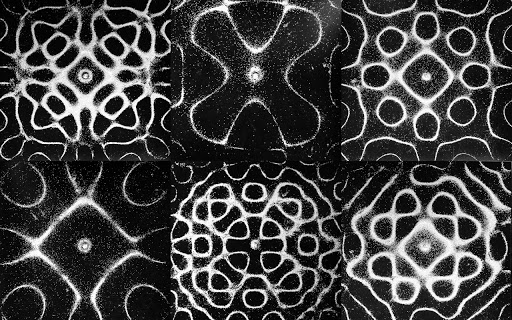
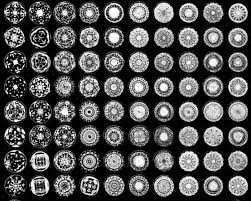
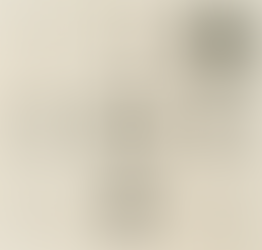







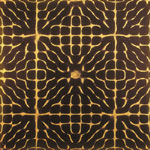
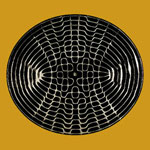
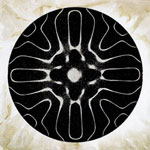
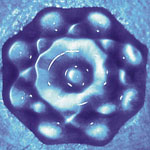
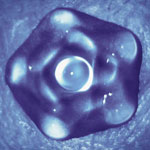
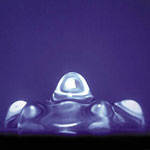
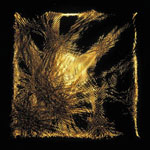
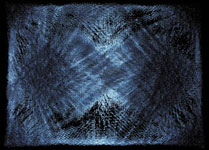
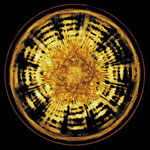








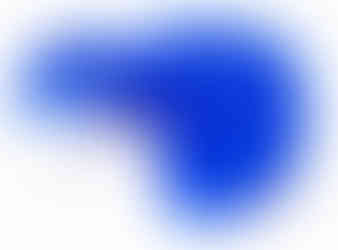





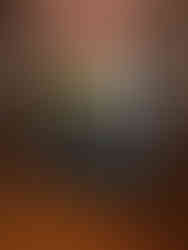










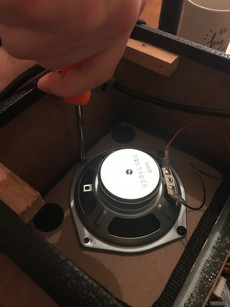












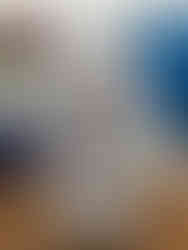

Comments